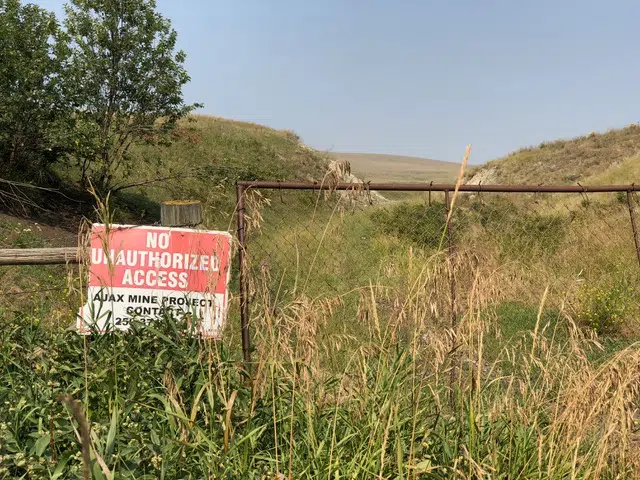
A nostalgia tour up Goose Lake Road, post-Ajax
TOOK A NOSTALGIA TOUR this week, driving up Goose Lake Road.
It’s different now than when KGHM was busy with pre-development on the Ajax project, but there are relics all along the way.
Every half a kilometer or so there’s a “Private Property” sign saying the land belongs to Sugarloaf Ranch Ltd., which, of course, was purchased by KGHM. A couple of the signs have been defaced with spray-painted graffiti.
Not far from the turnoff onto Goose Lake Road, one of the gates onto the Ajax property is still there, still locked, but the Ajax sign is gone. A second gate, though, still bears a sign — “No Unauthorized Access – Ajax Mine Project.” The entrance is now overgrown with weeds.


